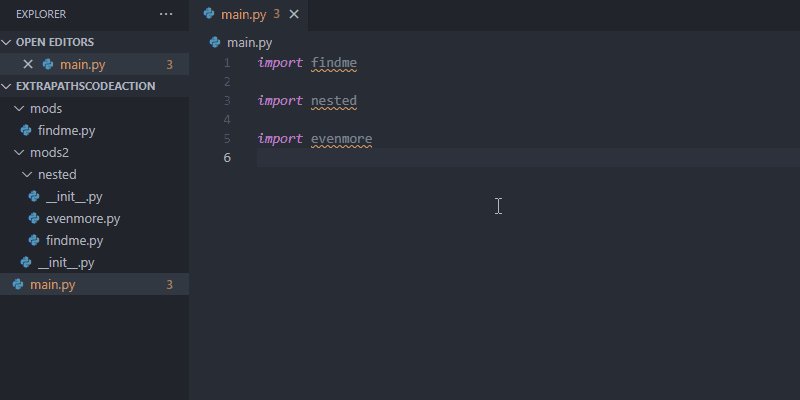
This package acts as a data provider for connecting to databases, executing commands, and retrieving results.
#VISUAL STUDIO CODE PYTHON INPUT INSTALL#
To connect to Azure SQL Database using Python, install the pyodbc driver. mkdir python-sql-azureĬreate a virtual environment for the app.
#VISUAL STUDIO CODE PYTHON INPUT CODE#
Open Visual Studio Code and create a new folder for your project and change directory into it. If you're using a corporate account, Azure Active Directory will most likely already be configured for you.Ĭreate a new Python project using Visual Studio Code. If you're using a personal Azure account, make sure you have Azure Active Directory setup and configured for Azure SQL Database in order to assign your account as a server admin. You can verify whether your server has Azure AD authentication enabled on the Azure Active Directory page. For local development connections, the Azure Active Directory admin account should be an account you can also log into Visual Studio or the Azure CLI with locally. The server must also have Azure AD authentication enabled with an Azure Active Directory admin account assigned.


You can pass a type, method, or other object to help to instantly see available documentation about the method, the parameters it expects, and what it returns. Don’t worry about these for now, we’ll use them later in the day. If we check the directory of str (notice, no quotes here)) in the REPL, we’ll see all the methods available on strings in Python. The first one is dir() which stands for directory. Now that we know this object’s type, we can We’ll see that the type is str, Python’s version of a string. We’ll cover it later in the day.įor example, in the REPL, let’s make a new variable name, and check its type. If you’re not sure what a variable or an object is, don’t worry. Copy the three lines below and paste them into your REPL. You can copy and paste code into the REPL, even multiple lines of code at once. In the REPL, we can see the value of any variable just by entering it into the prompt. # If the line does not start with >, that means it is output, Don't copy the > symbols, that means the code was entered lines that don’t start with either of these are output that was produced by running input from the promptīy typing these line of code at the > prompt, and press enter after each line.

In example code, lines starting with > means they are input

Later, when we run out Python code from files, you will no longer see the triple arrows. If you see these arrows in example code, don’t copy them into your own REPL. Note, in the REPL three arrows > indicate a line of input given at the prompt. The course content is licensed under a Creative Commons Attribution-NonCommercial-NoDerivatives 4.0 International License.


 0 kommentar(er)
0 kommentar(er)
